Where in the world was Altantuya?
March 12th, 2009 | by Sean |That’s the problem with announcing, ahead of articles, what you’re going to write about. You end up writing about anything but. I was reading Susan Loone’s blog recently, and followed some links to an article about the few remaining photographs of the tragic Altantuya Shaariibuu. Altantuya is a beautiful young Mongolian interpreter whose affair with a member of the Malaysian elites went bad and she was apparently executed by police officers before they destroyed her body with explosives. Susan closed the article with
“…when (date and time, please) Altantuya was in Paris?”
The article was posted in October 2007, so it seems odd that no comment responded to the question. They say curiosity killed the cat, well it robbed me of a couple of nights’ sleep! I left a comment to suggest that time of day could be found from shadows in pictures (and possibly time of year), and then decided that it was an interesting problem. I have a weakness for interesting problems. The first problem is picking a picture. There’s only really one picture with clear shadows in, albeit mostly truncated by the edges of the photograph. The shadows are nice and sharp though. The problem is, where is this? Susan says “Paris”, so the first step is to try Google’s Image search. The reason we need to know where the photograph is taken, is that we need to know the compass direction of the shadows. For that, we need the orientation of the place Altantuya is standing in!
Searching for “statue horse lion old buildings paris”
After several hours of staring at photos of statues of lions, horses, tourist sights in Paris, I had almost gone blind. The Google search that did the trick was
… and the image that matched the one in the picture was on page 17! I’ve lost the reference to the page that matched now, but it was a holiday snap by someone who was good enough to provide a name for the square the statue is in: The Piazza del Duomo in Milan, Italy. Now that we know where the picture was taken, we can use Google Maps (actually any old map would do, as long as it shows North and the scene can be distinguished) to find out the orientation of the scene in the photograph:
This is a great find, because the square appears to be nicely aligned with the compass, and the geometric patterns in the floor tiles are also visible in the photo of Altantuya above. The statue behind Altantuya is visible in the aerial phtograph at mid-left. You can clearly see the shadow of the man on the horse on top of the statue. Altantuya was standing with her back to this statue, facing the Duomo at the opposite end of the Piazza. Google Maps are aligned so that ‘up’ is true north.
Now that we know which way Altantuya was facing, we can work out which direction the shadows point and establish an estimate of the time of day. Why is the time of day important? Good question! Milan is quite far north (45 degrees north, roughly), so the sun rises to very different heights in the sky at different times of year. One of the most obvious effects of this is that your shadow is different lengths at different times of the year, at any given time of day. If you know the time of day, and you know the length of your shadow, you can hazard a guess at the time of year.
I’ve marked North and West along the joints between tiles in the photograph. You can see that the shadows are running North-East-ish in the photograph. I did initially think they must be almost exactly North East, looking at the shadow of the man behind Altantuya, as it seems to touch diagonally opposite corners of a tile. On closer inspection, the tiles don’t seem to be square, so my rough guess is that it’s something less than North East – between North East and North-North-East. If we were doing this properly, we’d take the photograph to the Piazza in person and try to match up the tiles exactly! What a great reason to go to Milan!
This isn’t forensic science though, this is just going through the steps out of interest. I took as my estimate somewhere between 30 degrees and 45 degrees after (the Sun moves clockwise with respect to a viewer in the Northern Hemisphere) North. A complete turn of the Earth is 360 degrees, it takes 24 hours, so that’s 15 degrees per hour. That gives us an estimate of between 2 and 3 hours after solar midday. Milan is not far off the centre of its time zone (Central European Time), so the sun is very close to South at midday.
That’s the easy part! Now we know where in the world Altantuya was standing and what time of day it was, we can take advantage of our knowledge of different length shadows at different times of the year (because of precession of the Earth’s axis – you knew that, right?) to work out a time of the year for the scene. My heart sank at this point – I don’t consider myself a mathematician, and my first attempts at finding out even what height the sun should be in the Milan sky at different times of year came to nothing. But then I found this wonderful page:
Solar Position Calculator : Ecotect WIKI
I usually do this kind of thing very late at night, so a graphical widget I can fiddle with is much more appealing than trying to construct a valid geometrical representation of what I thought I needed to calculate the time of year. One last thing: the length of the shadow. Actually, it’s the ratio of height to length of shadow that we’re interested in, so it doesn’t matter what the units are: we don’t actually need to know the physical length of anything. This shadow seems to be about the best in the scene, and I came up with a ratio of between 1.15 and 1.41 of shadow length to person height. It’s a wide range because the length of this shadow also depends on the difficult-to-establish compass direction, and also on the angle at which the camera views it. A few minutes of fiddling with the solar calculator (it has all got terribly unscientific, hasn’t it?) and I had two ranges of dates. The shadow length ratio gives two times in the year because one time is when the Sun is at a certain height ‘on the way up’ (cold part of year to warm part) and one when the Sun is on its way ‘down’ (warm part of the year to cold part).
From my estimates of time of day and shadow ratio (two estimates!), I extracted the periods 7th March to 20th April and 29th August to 3rd October. Of course, if you know your fashions you might have taken one look at Altantuya’s shawl and known whether it was Spring or Autumn in a specific year, but I don’t have that skill!
One last attempt to refine the estimate relies on another photograph of the Duomo, this time taken on the other side. There’s a tree bare of leaves in the photograph, and a quick check of Google Maps shows that this tree is on the North East side of the Duomo – in the shade. In the grandest tradition of hand-waving bluffers, I’m going to guess that the the tree would still have some brown leaves in September, and that it might be slow to put new leaves on in the Spring because of its shady position.
So there you have it: Altantuya was at the Piazza del Duomo, early-to-mid afternoon in Milan in March. But what year? That’s a job for someone else! After having done all this, I’ve decided that there’s an easier way of doing it, since the advent of social networking. I imagine you could use the parallel brute-force effort of thousands of people at social networking sites and just ask the question “where and when is this” and you’d find a few people who would recognise the scene – because they were there!
Even better, I suspect that given sufficient effort on the social networking sites, you might even find some people who have their own photographs of that time and place who can give a different angle on the scene. Wouldn’t that be marvellous? How should I know – I don’t use social networking sites because I have no friends! Or is it the other way around?
One question that strikes me from doing this: the photographs are quite low resolution, and all 480 pixels on the long side. They’ve been prepared with Adobe Photoshop in late 2007, according to the file data. Did Asia Sentinel have better quality pictures (link broken, updated 2012 July 16) that they resized for the web? There were other questions, I’m sure, but it’s very late again, and my mind’s gone blank. I’d be interested to know if anyone tries the social networking technique to try to fill in any more details in the last few months of Altantuya’s life.
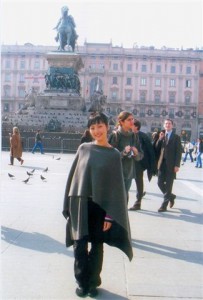
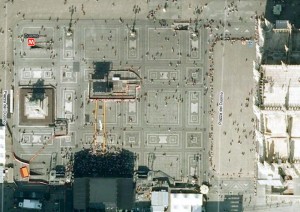
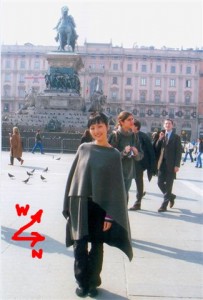
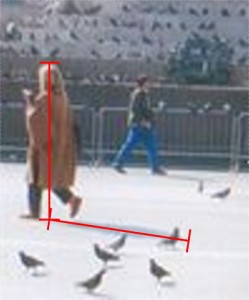
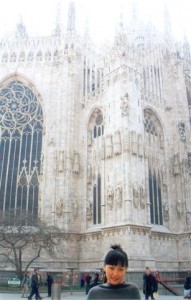
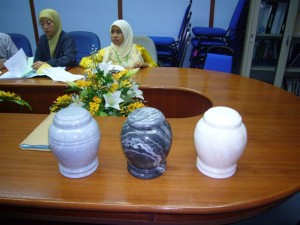
2 Responses to “Where in the world was Altantuya?”
By magickriver.blogspot.com/ on Mar 12, 2009 | Reply
Fascinating methodology, Sherlock. If I were a member of the illustrious PDRM it would be much easier to change Abdul Razak Baginda’s name in the official records to Arumugam a/l Balasundram. Then we could burn him with hot irons and beat him with rubber hoses till he disclosed every juicy detail of his European sojourn in a red Ferrari with the lovely Tuya. Not as scientific as what you have set out to do – but infinitely more fun, no? And good exercise too.
By sgbertih on Nov 22, 2009 | Reply
Made it to Answers.com
Just pay a visit once in a while…
Altantuya Forever !
http://www.answers.com/topic/altantuya-shaaribuu
Bala is back and Bala is useless as a tainted witness with contradictory SD’s, but hey, things sometimes work myteriously and make our days…